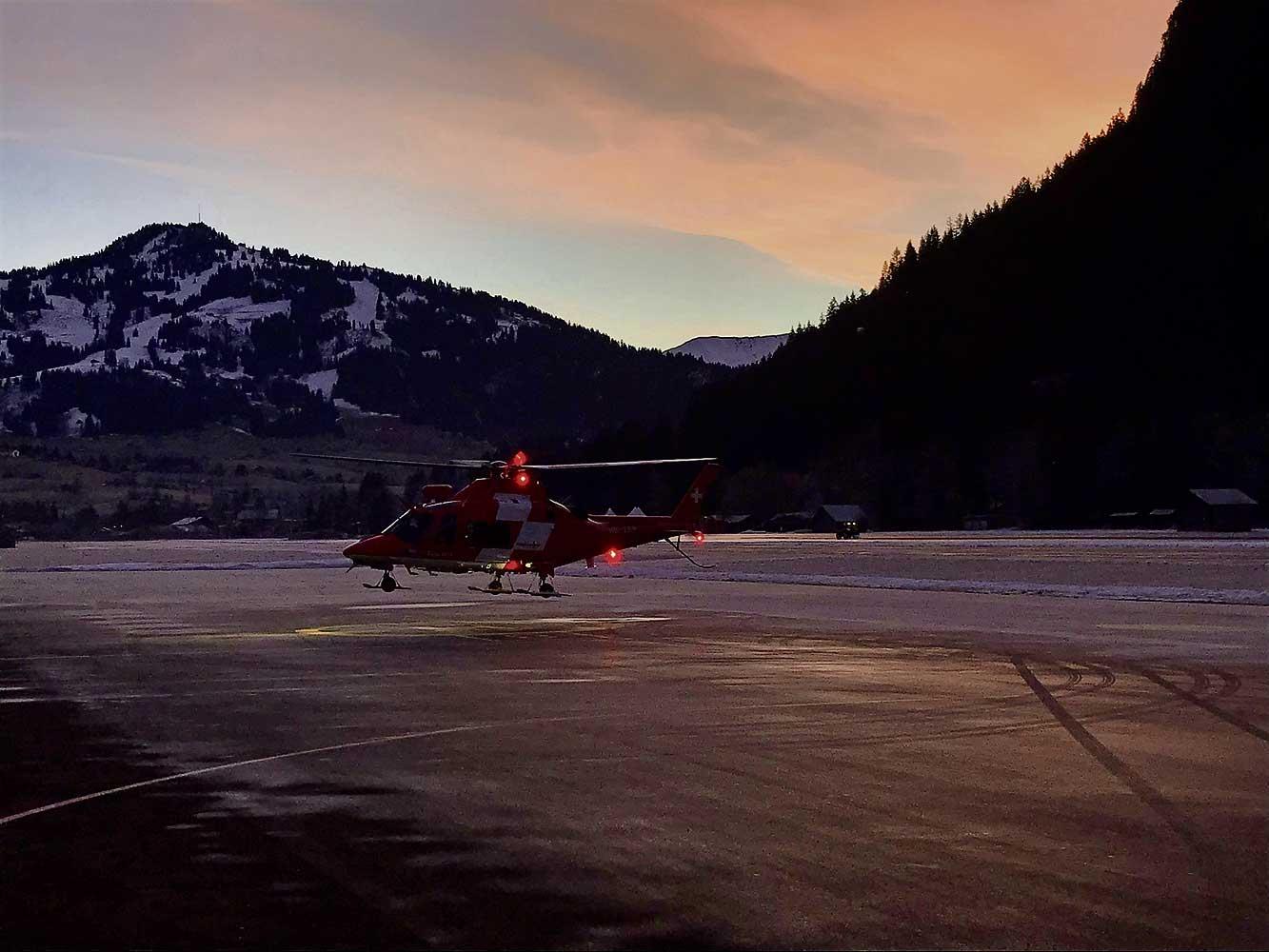Nighttime availability of a rescue helicopter in Saanen
30.01.2019 Gstaad LivingIt’s been set up thanks to the combined efforts of Rega, Air-Glaciers, Gstaad Airport, the municipality of Saanen and a group of private individuals.
As announced by the municipality of Saanen, Air-Glaciers and Rega in a joint statement, from 15 December 2018 to around 22 April 2019, a Rega rescue helicopter will be on standby on the Saanen airfield at night with a fully operational crew. This will benefit the entire population of the region. “The pilot trial for the 2018/19 winter season will show us whether or not this model is sustainable. It’s supported by a group of individuals, the two air rescue organisations, the municipality and the airport,” the statement said.
During the day, Air-Glaciers will continue their service with a helicopter on the Saanen airfield. In addition, a Rega helicopter is on night-time standby to ensure a 24-hour rescue service for the duration of the pilot project.
Night time deployment will only take place for rescue missions or urgent transfer flights from hospital to hospital, according to the announcement. The task force is limiting flights to those that are absolutely essential. There are no plans for training flights or similar activities.
Improving medical care
The Saanen rescue helicopter is an additional means of deployment and will improve night time medical cover from the air for the population of the entire region. “The emergency call centre 144 and Rega’s operations centre will deploy the rescue helicopter when urgent air ambulance medical assistance is needed.” As before, the Rega operates from the Zweisimmen deployment base during the daytime.
A private initiative
The pilot project stems from an initiative by the group Private Supporters for Trauma Emergency First Response in the Saanenland. This group consists of individual families who are residents in the municipality of Saanen. These people are worried about the emergency medical care in the region, writes the authority in a public statement. “The Simmental-Saanenland hospital facilities have been unstable over the last few years and plagued by political differences. Fortunately, in recent months, the Health and Welfare Directorate of the Canton of Bern (GEF) has managed the situation, using an approach that enjoys broad political support. The individual supporting families have noted the solutions announced to the public and have invested much goodwill and support in the plans.” They consider their project as a step into the same direction and are looking to “ensure adequate emergency medical care is provided in the Saanenland as from this winter season.”
A package of measures
Providing helicopter rescue during the high season is just one of several measures to be implemented. In addition, an emergency rescue vehicle will be available around the clock for rapid rescue operations, as well as 30 additional defibrillators to provide as much emergency cover as possible to support the first responders.
The municipality of Saanen has taken over one third of the costs
The purchase and operating costs of the project comes to around CHF 919,690 a year. Two-thirds of the total costs will initially be paid by the private supporters group. This means they’ll pay the full set-up costs of CHF 300,000 for the emergency vehicle and defibrillators. However, these private initiatives are also dependent on a contribution from the public sector, according to the local council.
The municipality of Saanen wants to support the project, initially injecting CHF 300,000 for the year. “The plans fit in well with the direction that the GEF is heading in. They’ve been agreed with Spital STS AG, as well as with project managers from Simmental Saanenland Healthcare,” the authorities write.
Winter ambulance continues to run
The additional ambulance used by Air-Glaciers during the winter season is unaffected by this provisional one-season pilot project. As in previous years, it will provide emergency medical care at night.
Justine Hewson / AvS




